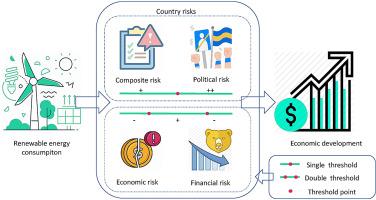Understanding the Current Economic Landscape: Challenges and Strategies
In an era where the global economy is increasingly fraught with unpredictability, a concerning mix of economic threats is surfacing. Factors such as rising inflation, disruptions in supply chains, geopolitical conflicts, and fluctuating energy prices are prompting critical inquiries about their long-term effects. Are these merely isolated events or do they signify a deeper systemic issue? This article examines the various economic hurdles nations face today by analyzing expert opinions to ascertain whether these growing pressures are anomalies or indicators of an impending crisis that could transform the financial environment for years ahead.
Emerging Economic Weaknesses in Global Markets
The deterioration of global economic conditions has unveiled vulnerabilities that may lead to widespread instability. The persistent impact of high inflation rates, ongoing geopolitical strife, and disrupted supply chains have compelled investors to reevaluate their strategies. Financial institutions are adopting a more cautious stance as central banks grapple with the challenge of steering through this precarious situation without triggering further downturns. Key metrics indicate a potential slowdown on the horizon, suggesting risks associated with recession rather than just temporary recovery phases.
The repercussions of these vulnerabilities are already evident across multiple sectors. Recent data highlights significant trends:
- Consumer Sentiment: A 15% decline was recorded in Q3 due to worries over increasing expenses.
- Manufacturing Activity: A month-over-month decrease of 3% indicates weakening production capabilities.
- Market Fluctuations: Stock market volatility surged by 25%, reflecting investor anxiety regarding broader uncertainties.
Additionally, analysts are closely observing how persistently high energy costs affect household finances and contribute to overall inflationary trends. Performance indicators for small businesses suggest a bleak outlook, raising concerns about whether these challenges will resolve independently or if they point toward a more entrenched economic malaise.
Analyzing Inflationary Pressures and Rising Debt Levels
The struggle against rising inflation rates has made it crucial to understand its underlying risk factors globally. Several elements contribute significantly to sustained inflationary pressure; economists worry that these may not be fleeting issues but rather persistent challenges. Among them are:
- Sustained Supply Chain Disruptions: Ongoing issues within supply chains—exacerbated by geopolitical tensions and health crises—have resulted in notable bottlenecks and delays.
- Evolving Energy Costs: Variations in energy prices can have cascading effects throughout the economy, influencing transportation and manufacturing costs alike.
- Labor Market Constraints: Shortages in key workforce areas can drive wages higher as companies pass increased costs onto consumers, further fueling inflation.
Together with rising inflation levels, escalating debt presents another significant threat as both governments and households navigate through these turbulent times. The relationship between increased borrowing practices amid high inflation creates an unstable scenario where elevated debt levels could stifle economic growth prospects. Major contributors include:
- Crisis Response Measures by Governments: While intended to bolster economies during downturns, excessive borrowing can lead to long-term fiscal difficulties down the line.
- Burgeoning Consumer Debt Levels: strong>A rise in credit card balances and personal loans diminishes household resilience against financial shocks. li >
- < strong >Interest Rate Adjustments:< / strong > As central banks increase ratesto combatinflation ,the costof servicing existing debts may escalate ,further straining financial resources .< / li >
ul >Risk Factor Potential Impact Supply Chain Disruptions Higher production costs and consumer prices < td >Elevated Energy Prices< / td >< td >Widespread ripple effects across multiple sectors< / td > tr > < td >Labor Shortages< / td >< td >Increasing wages leading to heightened inflation< / td > tr > < td >Government Borrowing< / td >< td >Long-term fiscal instability< /td > tr > User Debt Levels Diminished spending capacity and savings potential Strategic Initiatives Required for Long-Term Economic Stability
The evolving complexities within our economic landscape underscore an urgent need for effective strategies aimed at mitigating looming threats. Experts advocate for proactive measures from both governments and businesses which should encompass:
- Create Emergency Reserves: A dedicated fund can help manage unforeseen economic shocks effectively.
li > - < b style='font-weight:bold'>Investing In Technological Advancements:< b /> Embracing digital transformation is vital for enhancing efficiency while building resilience.< br /> b> li >
- < b style='font-weight:bold'>Diversifying Supply Chains:< b /> Minimizing dependence on single sources helps mitigate risks linked with global disruptions.< br /> b> li >
- < b style='font-weight:bold'>Promoting Sustainable Practices:< b /> Prioritizing environmental sustainability enhances long-term viability within economies.< br /> li > ul>
Moreover ,collaboration between public entities along private sectors proves essential when formulating comprehensive policies designed specifically against volatility .A coordinated effort might involve establishing an advisory board focused on economics tasked with:
Conclusion & Reflections on Current Economic TrendsFocus Area “ Recommended Action “ “
” “<"Funding innovation initiatives targeting emerging industries." ""t d>”
“”
“” “”
“”
“” “”
“”
“
As apprehensions surrounding escalating economic hazards intensify ,the fundamental question persists :Are we witnessing isolated incidents or signs indicating deeper systemic issues ? As experts analyze data continuously emerging ,implications affecting markets,businesses,and consumers grow increasingly intricate .The urgency surrounding vigilance,strategic planning,and proactive measures has never been greater .Policymakers must address immediate threats while remaining alert towards underlying vulnerabilities capable exacerbating future challenges .With our global economy currently experiencing fluctuations,the upcoming months will prove pivotal determining whether we confront merely sporadic events or embark upon prolonged periods marked by instability.As developments unfold,it becomes evident that interactions between localized occurrences alongside broader trends will shape our collective narrative regarding economics moving forward.
- < strong >Interest Rate Adjustments:< / strong > As central banks increase ratesto combatinflation ,the costof servicing existing debts may escalate ,further straining financial resources .< / li >
